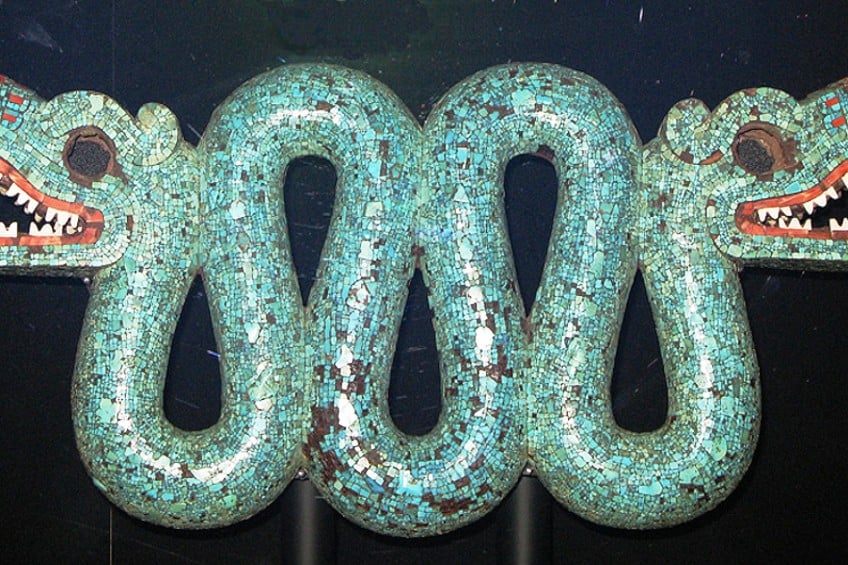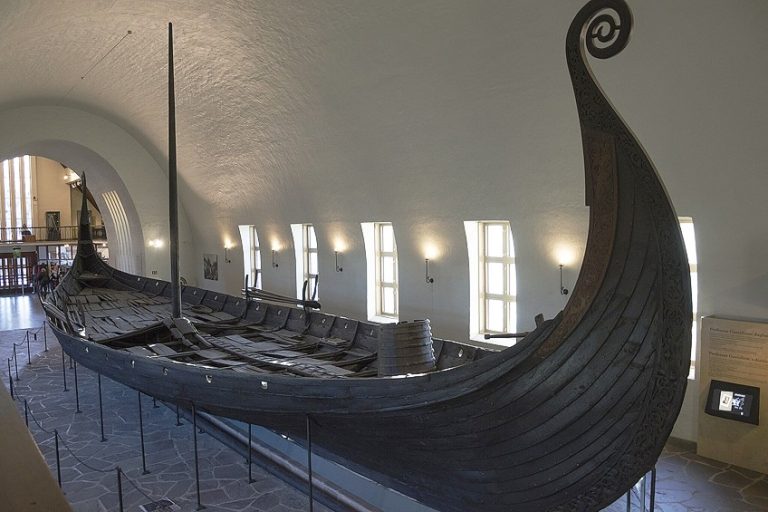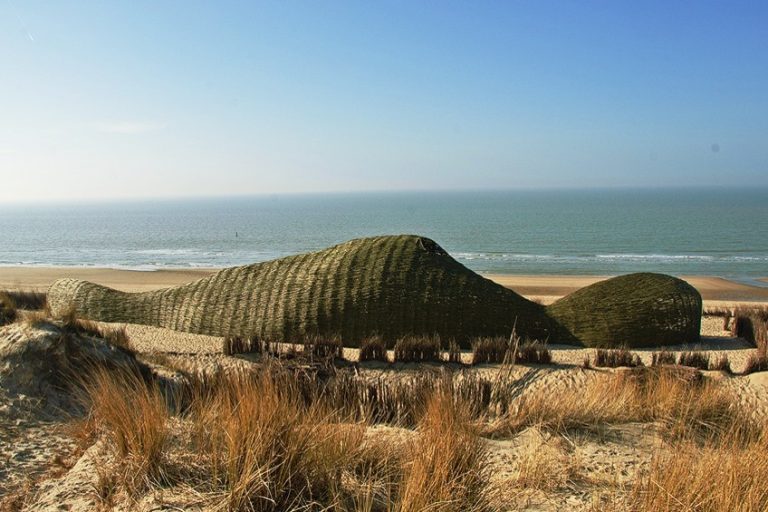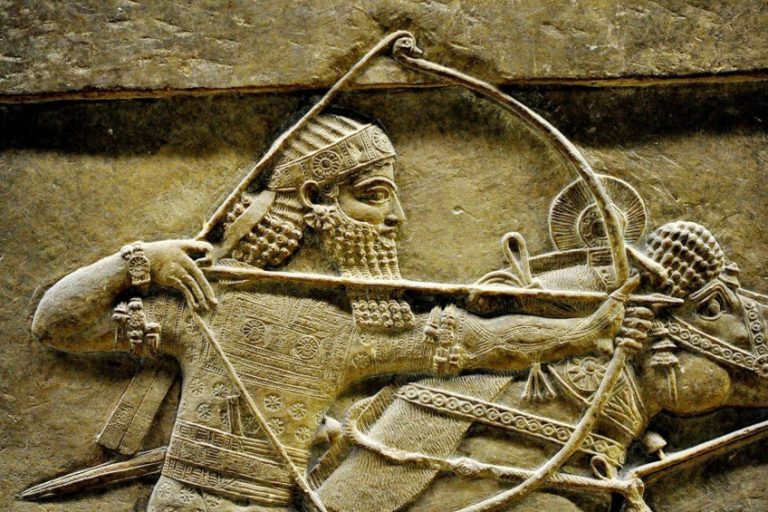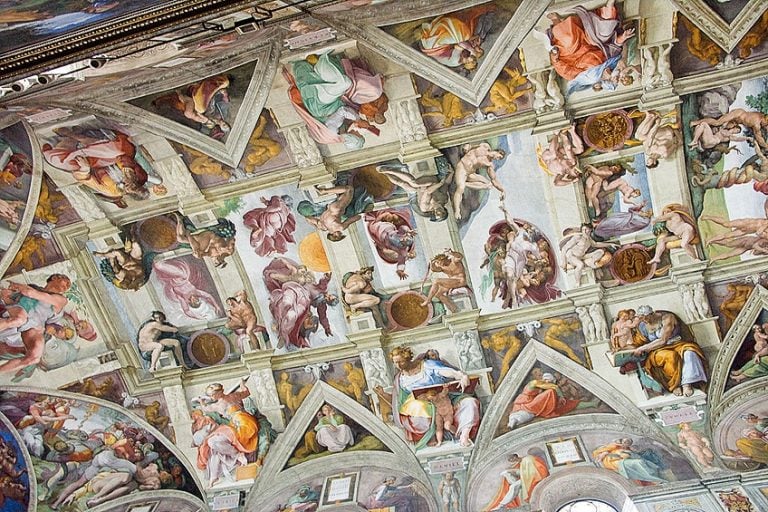Aztec Artifacts – Time Capsules of the Aztec Empire
The Aztec civilization was one that led to the creation of some of the most stunning examples of Mesoamerican artworks. We are going to have a look at a few of those ancient Aztec artifacts to learn more about them, what they represent, and where they were found. We may even learn some Aztec history and mythology along the way! Keep reading to discover more about Aztec artifacts.
A Look at Aztec Artifacts
The Aztec civilization was one that existed within what is present-day Mexico. For this reason, a look at Aztec artifacts is also a look at ancient Mexican artifacts, and many of them are stunning examples of ancient artworks.
We will examine ten of these Aztec relics today, so let’s get started.
Disk of Mictlāntēcutli (100 – 600 CE) from Teotihuacan
| Date | 100 – 600 CE |
| Materials Used | Basalt |
| Function | Sculpture |
| Discovery Location | Teotihuacan, Mexico |
The Disk of Mictlāntēcutli is an ancient Aztec relic made of basaltic rock that was discovered in the Pyramid of the Sun. The disc is one of the most stunning examples of early Aztec artifacts as it depicts Mictlāntēcutli, the culture’s god of the underworld, and Mictlān, the underworld itself. The disc features a sculpture of a skull with its tongue sticking out, and the entire skull is surrounded by a headdress that would have once encircled the entire sculpture but has since broken apart.
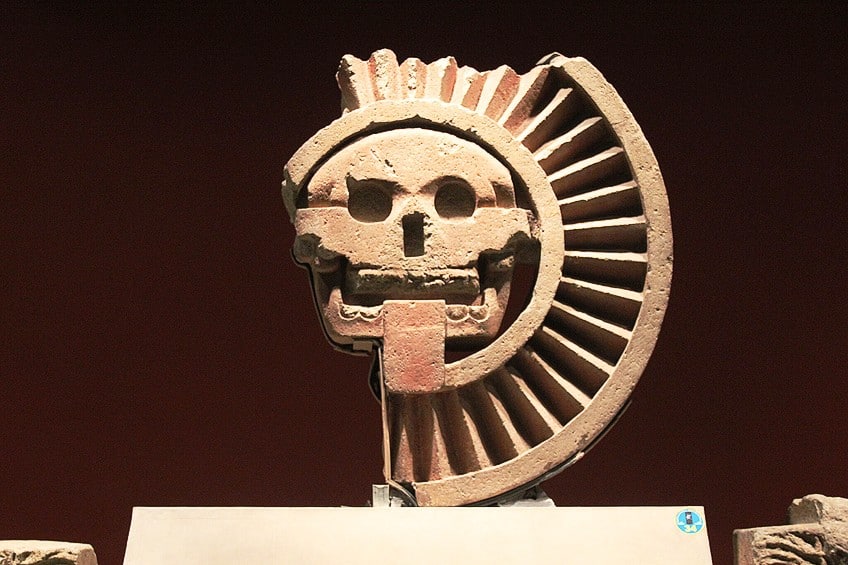
The discovery of the ancient sculpture has also been marred in some level of mystery as the exact origins are not known. There are various theories about its creation being immensely early, but others place it as being later. It may be nearly two millennia old, but it may have also been created significantly later by those who still revered these Aztec gods. Regardless, it is still one of the most ancient Aztec artifacts.
Serpent Labret with Articulated Tongue (1300 – 1521) from Tlatelolco
| Date | 1300 – 1521 |
| Materials Used | Gold, silver, and copper |
| Function | Lip plug |
| Discovery Location | Tlatelolco, Mexico |
The Serpent labret with articulated tongue is one of the earliest Mexican artifacts of its kind. This sculpture is a lip ring that is made of a combination of gold, copper, and silver. In addition to this, the lip ring would have been crafted through the use of the lost-wax process, in which a mold is used and destroyed in the process of its creation. The most stunning aspect of this most beautiful of Aztec relics is that it features a serpent design with a protruding tongue that can be retracted or extended as desired.
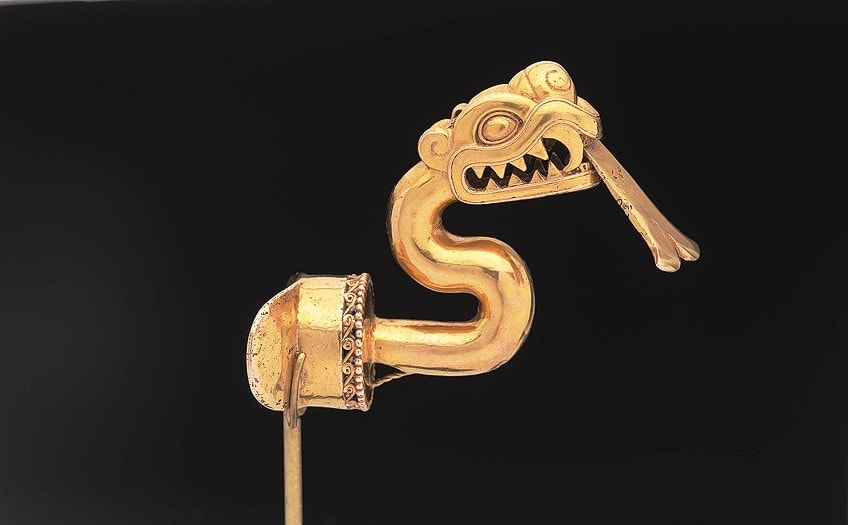
The craftsmanship of this particular Aztec artifact is what makes it one of the most stunning finds, and it is considered by some to be the finest example of an Aztec gold ornament that managed to survive the war against the Spanish. The original purpose of this artifact would have been to attach within a user’s mouth via a piercing, and because of the retractable tongue, it would have moved and swayed with the movement of whoever was wearing it.
Double-headed Serpent (15th – 16th Centuries) from Tlatelolco
| Date | 15th – 16th century |
| Materials Used | Turquoise and wood |
| Function | Religious ornament |
| Discovery Location | Tlatelolco, Mexico |
The Double-headed Serpent is one of the most striking of all Aztec artifacts to have been discovered. It is the sculpture of a snake with two heads, and each of the heads faces a different direction. The artifact was made of a wooden base onto which turquoise pieces were glued. This makes it a similar mosaic piece to the previously mentioned Mask of Xiuhtecuhtli.

The heads of the serpents were made hollow, but there are a few remaining traces of resin and beeswax in the holes, and so there may have been items of some kind set within the holes to act as eyes. However, additional pieces such as that are often the first to fall from an item over the years. The sculpture has remained one of the most stunning examples of Aztec artistry regardless of the wear and tear it has sustained.
The Mask of Xiuhtecuhtli (1400 – 1521) from Tlatelolco
| Date | 1400 – 1521 |
| Materials Used | Mosaic |
| Function | Ceremonial mask |
| Discovery Location | Tlatelolco, Mexico |
The Mask of Xiuhtecuhtli is one of the more eerie Aztec relics that one is likely to find on this list, and it is a mask that is believed to be a representation of the Aztec god of fire, Xiuhtecuhtli. The mask itself is made of a cedar wooden base that is resplendently decorated with an array of turquoise pieces that are glued to it. The purpose of this particular mask may have been to serve as a mask on an effigy of a god or it may have been used by a god impersonator in a ceremony. We cannot be certain of the exact purpose of many ancient Aztec artifacts, but educated guesses are often to be expected.

The mask’s design makes it one of the most stunning examples of Mesoamerican mosaic designs that has ever been uncovered. However, the history of its “discovery” is not particularly pleasant, as it is believed that this is one of the pieces of treasure that was brought by the conquistador, Hernán Cortés when he returned to Charles V after his early conquests in the region. This means that the mask was taken as plunder rather than being discovered long after the fact.
Coatlicue Statue (1439 or 1491) from Tenochtitlan
| Date | 1439 or 1491 |
| Materials Used | Andesite |
| Function | Sculpture |
| Discovery Location | Tenochtitlan, Mexico |
The Coatlicue statue is one of the best-preserved Aztec sculptures to have ever been discovered. The tall statue is comprised of a snake and skull iconography, but the exact purpose of the statue is not known, and we are not certain about what it represents. It was buried when the city was conquered and only rediscovered a few centuries later. It has since become one of the most famous of all the Aztec artifacts that have been preserved.
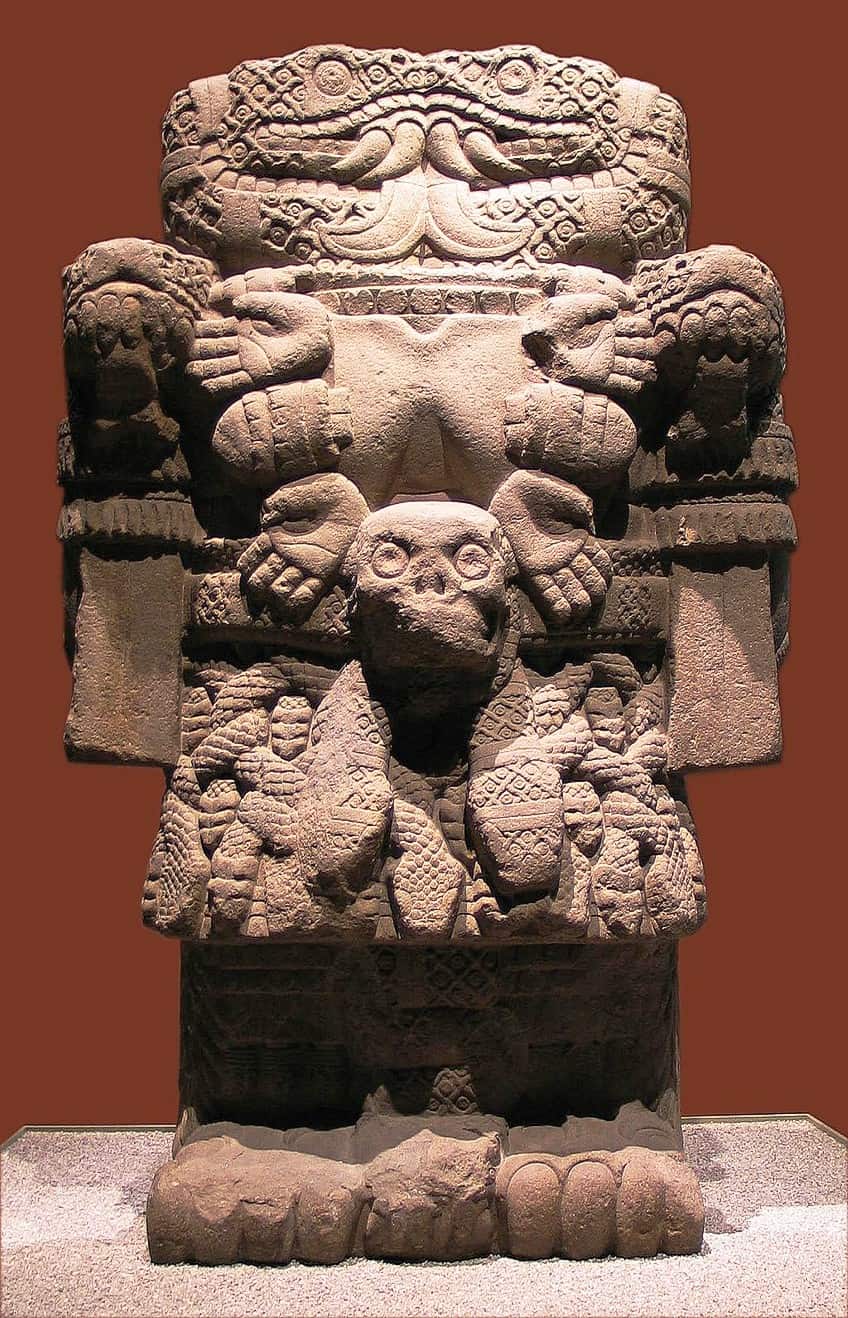
Stone of Motecuhzoma I (1440 – 1469) from Tezcatlipoca
| Date | 1440 – 1469 |
| Materials Used | Stone |
| Function | Stone monolith |
| Discovery Location | Tezcatlipoca, Mexico |
The Stone of Motecuhzoma I is a monolithic stone sculpture that is dated to the reign of the monarch after whom it is named. It is a breathtaking example of the sculptures that were possible during the Aztec era. The image is made up of an upper face that reveals the face of the Aztec sun god, Toniatuh, and it also features an intricate array of side panels that depict a number of different scenes of conquest and human sacrifice.
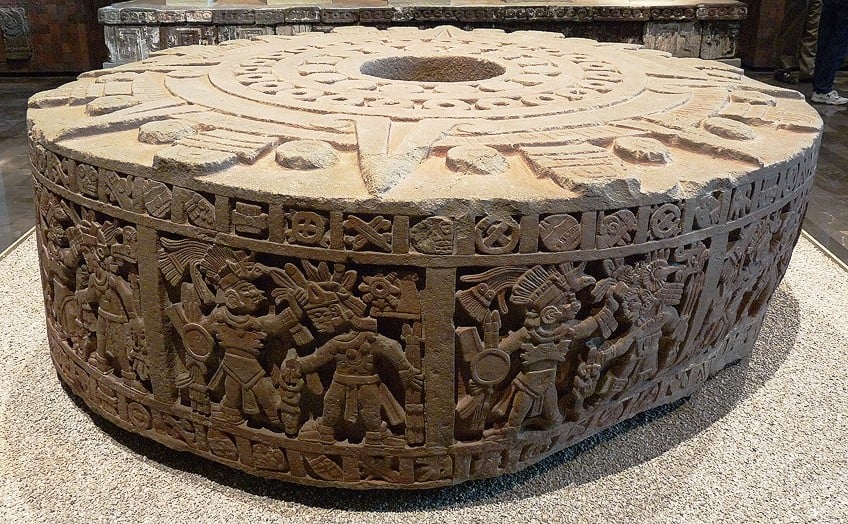
The stone was discovered under the Palacio del Arzobispado in the late-1980s. This palace was constructed shortly after the conquest of Tenochtitlan by the Spanish. When the stone was discovered, it was found alongside an array of other valuable Aztec artifacts. It has since been preserved as an important part of the history of the Aztec Empire.
Coyolxauhqui Stone (1473) from Tenochtitlan
| Date | 1473 |
| Materials Used | Stone |
| Function | Stone circle |
| Discovery Location | Tenochtitlan, Mexico |
The Coyolxauhqui Stone is a gorgeously carved, monumental stone that serves as a representation of Coyolxāuhqui. This mythological figure is in the process of being dismembered in this particular sculpture. The stone sculpture is considered to be one of the best-preserved Aztec artifacts to have ever been discovered and a stunning example of the artistry that the Aztec people were capable of.
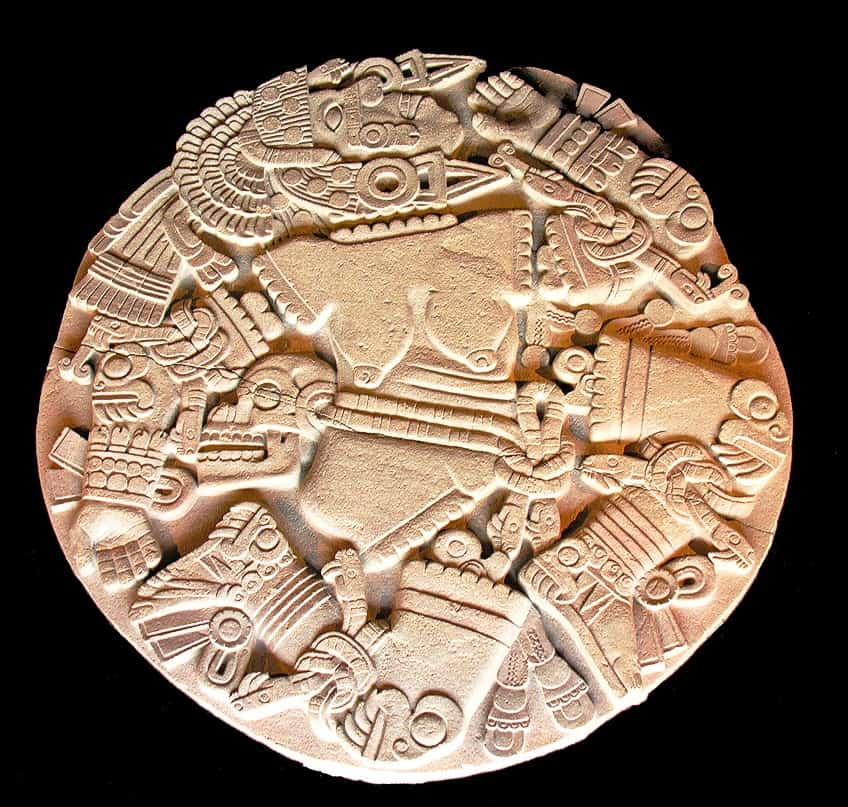
Stone of Tizoc (1480s) from Tenochtitlan
| Date | 1480s |
| Materials Used | Basalt |
| Function | Carving |
| Discovery Location | Tenochtitlan, Mexico |
The Stone of Tizoc is a large basalt carving that features a central depression that may have been used as a cuauhxicalli, which was the location in human sacrifices where the human heart was stored during the ceremonies, or even possibly a temalacatl, which is a form of gladiatorial platform. We are not certain about the specifics of these Aztec artifacts though, and so this is an educated assumption. There are others who have tried to dissuade academics of these beliefs as we simply cannot know what the central depression was used for.
However, the stone itself was discovered when repaving work was being done in Mexico City in the late-18th century. The stone was in the process of being carved up and used as cobblestone, but it was saved by a passing man who noticed that it was not simply a regular stone. When it was discovered, it spent several decades propped up against the side of a church before it was finally moved to a university.
Teocalli of the Sacred War (Around 1502 – 1520) from Tenochtitlan
| Date | Around 1502 – 1520 |
| Materials Used | Basalt |
| Function | Stone miniature |
| Discovery Location | Tenochtitlan, Mexico |
The Teocalli of the Sacred War is one of the most fascinating of all the Aztec artifacts that have been discovered. It is a monolithic miniature that represents a temple. Monolithic structures are ordinarily immensely large, and that is the case with this design, but the monolithic structure was carved into the shape of an Aztec temple. It is also believed that this miniaturized version of a temple may have been used as a throne, and it may have been used as the throne of Motecuhzoma II.
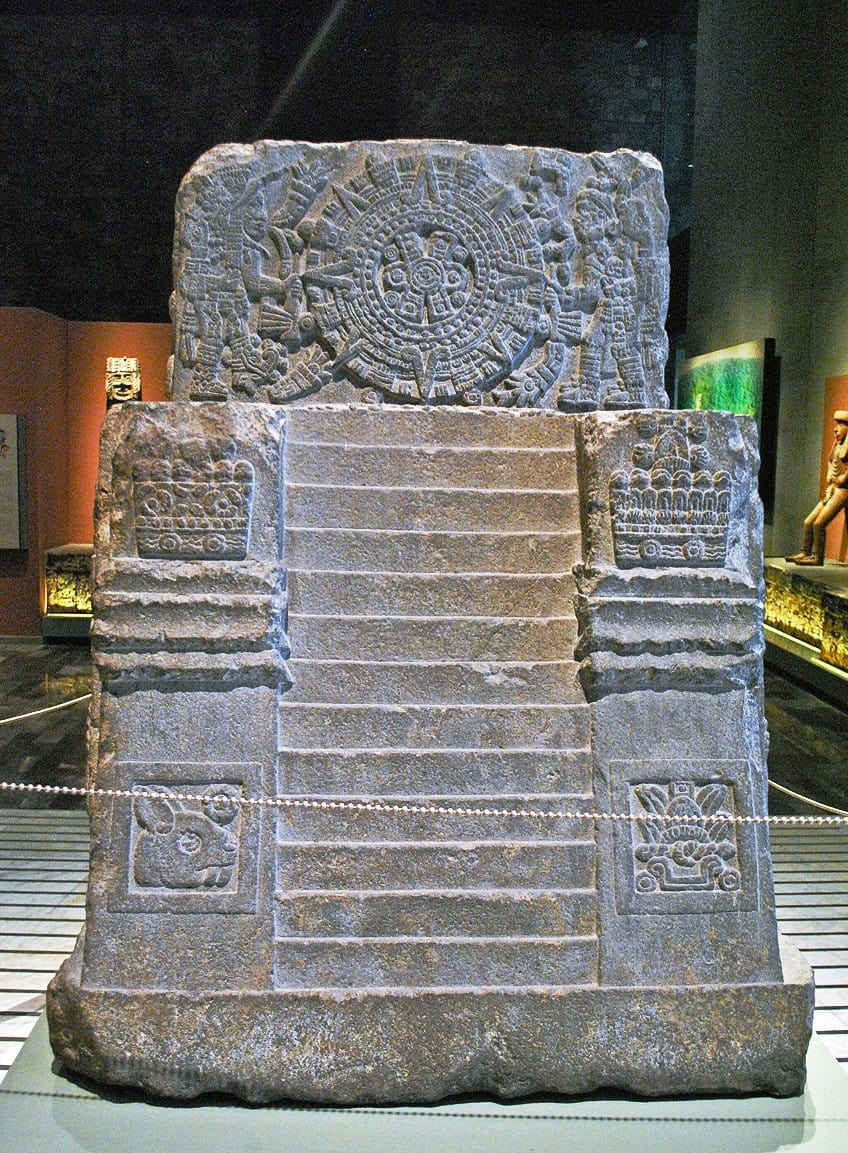
The monolithic structure was discovered centuries after the collapse of the Aztec Empire, but it is one of the oldest Aztec relics that we have discovered from the period. For this reason, it is considered to be representative of the kinds of designs that were produced during the Late Post-Classical era of the Aztec Empire. The sculpture is decorated in a variety of images and designs, and there have been conflicting theories about what they represent. Some have suggested cosmological reasons while others posit mythological ones.
Montezuma’s Headdress (Possibly 1502 – 1520) from Tenochtitlan
| Date | Around 1502 – 1520 |
| Materials Used | Feathers and gold |
| Function | Headdress |
| Discovery Location | Tenochtitlan, Mexico |
Montezuma’s headdress is, as the name suggests, a headdress and one of the oldest examples of the many Aztec relics that were found after the collapse of the Aztec Empire. This particular headdress, according to tradition (although it is debated by many) was the property of Moctezuma II. This particular monarch was the final one, and under his rule, the Aztec Empire came to an end under the Spanish invaders.
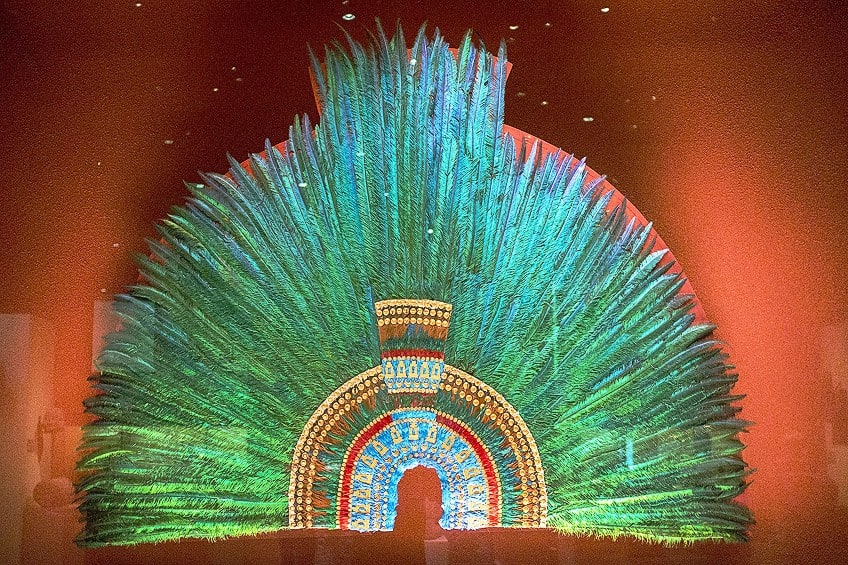
The headdress itself is made of quetzal and other feathers with gold detailing. Much of the design has deteriorated over the centuries, as may be expected of something made of feathers, but it is still a stunning sight to behold. There has been significant debate over its authenticity as an Aztec artifact at all, but it has been displayed as one ever since it was discovered.
We have come to the end of our examination of Aztec artifacts. We have looked at ten different items that are indicative of ancient Mexican artifacts to see what they have represented and why they have value in understanding this ancient and fallen culture. Hopefully, you have learned a good deal about the Aztec civilization and the relics associated with it. However, there is always more to learn, and there are many other ancient Aztec artifacts worth exploring!
Frequently Asked Questions
What Are Aztec Artifacts?
Aztec artifacts are any objects that were made by the Aztec people. This was a Mesoamerican civilization that is considered to be one of the greatest architectural and artistic forces in the pre-Columbian Americas. This civilization was known for its pottery, metalwork, sculptures, and many other examples of stunning artistry. The entire civilization came to an end in the 16th century, and so all ancient Aztec artifacts are considered to be of immense historical significance.
Who Were the Aztecs?
The Aztecs were a Mesoamerican culture that resided within Mexico from the 13th century until the 16th century. This early American civilization was made up of a variety of city-states and is known for its stunning artistry and architectural prowess. The empire continued to expand throughout its existence but ultimately came up against the Spanish conquistadors in the 16th century. The Aztec Empire eventually collapsed after its conquest.
When Was the Aztec Period?
The Aztec period refers to an era in Mesoamerican history that lasted from about 1325 to 1521. The earliest origins of the Aztec civilization saw it as a nomadic people, but in 1427, there was a coalition of three major cities and the empire was born. The Aztec period came to an end in 1521 when the Aztec capital of Tenochtitlan fell to the invaders.
What Is the Most Famous Aztec Artifact?
There have been various ancient Aztec artifacts that could be considered as the most famous of them all. The Double-Headed Serpent sculpture (15th – 16th centuries) made of wood with turquoise mosaic may be one of the most famous. It has become emblematic of the kind of artistry that was possible within the Aztec Empire.
Why Did the Aztec Civilization Come to an End?
The Aztec Empire eventually collapsed because the capital city of Tenochtitlan fell in 1521. The city was the last standing of the Aztec civilization as it was the site of the final confrontation between the Spanish and the Aztecs. The site was ultimately conquered by the Spanish invaders, led by Hernán Cortés, but the city was not destroyed. It instead ultimately laid the foundations for what is now Mexico City, the capital of the country.
Justin van Huyssteen is a freelance writer, novelist, and academic originally from Cape Town, South Africa. At present, he has a bachelor’s degree in English and literary theory and an honor’s degree in literary theory. He is currently working towards his master’s degree in literary theory with a focus on animal studies, critical theory, and semiotics within literature. As a novelist and freelancer, he often writes under the pen name L.C. Lupus.
Justin’s preferred literary movements include modern and postmodern literature with literary fiction and genre fiction like sci-fi, post-apocalyptic, and horror being of particular interest. His academia extends to his interest in prose and narratology. He enjoys analyzing a variety of mediums through a literary lens, such as graphic novels, film, and video games.
Justin is working for artincontext.org as an author and content writer since 2022. He is responsible for all blog posts about architecture, literature and poetry.
Learn more about Justin van Huyssteen and the Art in Context Team.
Cite this Article
Justin, van Huyssteen, “Aztec Artifacts – Time Capsules of the Aztec Empire.” Art in Context. October 10, 2023. URL: https://artincontext.org/aztec-artifacts/
van Huyssteen, J. (2023, 10 October). Aztec Artifacts – Time Capsules of the Aztec Empire. Art in Context. https://artincontext.org/aztec-artifacts/
van Huyssteen, Justin. “Aztec Artifacts – Time Capsules of the Aztec Empire.” Art in Context, October 10, 2023. https://artincontext.org/aztec-artifacts/.


